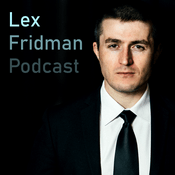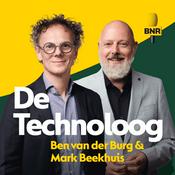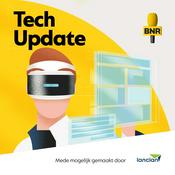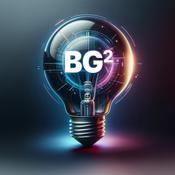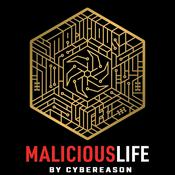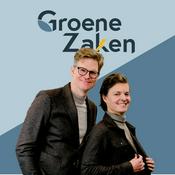Beschikbare afleveringen
5 van 203
- 201. The Uranium Renaissance: Revitalizing America’s Nuclear Supply ChainAs the global demand for clean energy intensifies, nuclear power is enjoying a resurgence not seen in decades. However, this renewed interest has exposed a critical vulnerability in the U.S. energy sector: a massive disconnect between uranium consumption and domestic production. As a guest on The POWER Podcast, Thomas Lamb, president and CEO of Myriad Uranium, discussed some of the complexities of the nuclear fuel cycle and how junior exploration companies are racing to secure America’s energy future. The Great American Supply Deficit To understand the urgency of the current uranium market, one must first grasp the sheer scale of consumption. A single large-scale nuclear reactor consumes approximately 400,000 to 500,000 pounds of uranium oxide concentrate (U3O8) annually, depending on design, capacity, and operating efficiency. The U.S. operates 94 commercial reactors today, resulting in a national consumption of roughly 37 million to 47 million pounds of U3O8 per year. The domestic production figures, however, paint a starkly contrasting picture. “The United States consumes, for very round numbers, 50 million pounds of uranium per year, and produces a million pounds of uranium per year,” Lamb explained. To be more specific, the U.S. Energy Information Administration reported that domestic production of U3O8 was 677,000 pounds in 2024, and it’s been much lower than that in the not-too-distant past. This imbalance creates a precarious reliance on foreign imports. Lamb noted that Kazakhstan alone produces more than 40% of the world’s uranium. More concerning for U.S. national security is the country’s reliance on Russia, where a surprisingly high percentage of U.S. reactor fuel bundles are sourced. “You have a worldwide supply deficit, and then you have an enormous domestic production deficit in the United States relative to consumption. That makes the U.S. vulnerable,” Lamb said. “What if Kazakhstan, China, [and] Russia kind of work together? What if they cut off the United States? What if some other things happen? The U.S. could be short of uranium.” Revitalizing History: The Copper Mountain Project Myriad Uranium is positioning itself to fill this gap by revitalizing past assets rather than starting from scratch. The company’s flagship asset, the Copper Mountain Uranium Project in Wyoming, was a focal point of Union Pacific’s energy subsidiary in the 1970s. Union Pacific invested approximately CA$117 million (in 2024 dollars, US$84.7 million) into the site, planning a large-scale mine to fuel reactors in Southern California that were ultimately never built due to the post-1979 nuclear freeze. Because the project was abandoned due to external market forces rather than a lack of resources, it represents a “brownfield” opportunity. “In our case, we already know it’s there because a lot of the work was done,” Lamb said. “Now, we just have to … bring the information current,” he added.--------47:24
- 200. Emerson Addresses Power Industry’s AI-Driven Demand SurgeThe power industry is experiencing unprecedented demand growth, driven largely by data centers and artificial intelligence (AI) applications. This surge is creating both opportunities and challenges for utilities, equipment manufacturers, and the broader power generation ecosystem. As a guest on The POWER Podcast, Seth Harris, growth director for Emerson’s Power business in North America, discussed how the company is helping the industry navigate this transformative period. With 20 years at Emerson across various roles, Harris brings a comprehensive perspective on the evolving needs of power generation facilities. The Data Center Effect The conversation around power generation has fundamentally shifted. Data centers are forcing utilities to rethink everything. “I’m focused on the power markets, but I can’t tell you the last time I was able to have a conversation about power without somehow referencing the data center aspect of it,” Harris said. This demand is affecting multiple stakeholders simultaneously. Manufacturers of turbines, heat recovery steam generators, control systems, valves, and instruments are all facing unprecedented orders. The challenge extends beyond simply meeting demand. Companies must rapidly scale up manufacturing capabilities and engineering resources that have been stagnant for years. Extending Plant Lifespans Among the things that must be rethought are decisions on existing plant operations. In some cases, power plants that were previously scheduled for retirement are now being extended. “The ability to deliver power as quickly as possible is certainly top of mind as this kind of race to deliver on the technology promises coming from AI and the various use cases for data centers has really put those existing assets in a place where they have to focus on driving the most efficiency and reliability they possibly can,” said Harris. However, many owners haven’t been investing in these plants beyond the necessities, which means upgrades are often needed to keep the plants operating efficiently. “The technology has come a long way since those facilities were originally built,” Harris explained. Furthermore, operational expectations are changing. Rather than operating as baseload units, these legacy facilities may now only be called on to provide peaking or backup power, which means control systems may need upgrades to accommodate for that as well. Harris said retrofitting existing plants “has been a bit of a boom from an Emerson standpoint.”--------18:12
- 199. Powering Taiwan’s Future: Inside the Award-Winning Sun Ba II Power PlantEnergy security represents one of Taiwan’s most pressing challenges. With virtually no domestic fossil fuel resources and limited renewable energy potential relative to its needs, the island imports approximately 98% of its energy. The semiconductor fabrication plants that drive the economy are particularly energy-intensive, requiring uninterrupted power supplies to maintain their precision manufacturing processes. Any disruption in electricity can halt production lines worth billions of dollars, making grid stability and efficient power generation not merely infrastructure concerns but fundamental pillars of Taiwan’s economic competitiveness. This reality has driven the island to pursue cutting-edge power generation technologies, including advanced combined cycle plants that can deliver maximum efficiency from imported natural gas. One such plant, the Sun Ba II facility, entered commercial operation in May 2025. It was recently recognized as a 2025 POWER Top Plant award winner. “That this project got recognized with your power plant award, I think this is really a nice story and a nice finish I would never have expected when I came here,” Thomas Ringmann, director of Business Development with Siemens Energy, said as a guest on The POWER Podcast. Sun Ba II is a 2 x 1 multi-shaft configuration, which means there are two gas turbines and two heat recovery steam generators (HRSGs) serving one steam turbine. The gas turbines and the steam turbine each have their own generators. “We have used in this project our latest and biggest gas turbine—the SGT-9000HL,” Ringmann explained. “The steam turbine is a SST-5000, so that’s a triple-pressure steam turbine with a combined HP [high-pressure] and IP [intermediate-pressure] turbine, and a dual-flow LP [low-pressure] turbine. Also, we had an air-cooled condenser, condensing the steam from that steam turbine, and we had a three-pressure reheat HRSG, which was of Benson-type technology.” The project began at the peak of the COVID pandemic, which presented a large challenge. “Every project meeting, every design meeting, every coordination meeting were all done online,” Andy Chang, project manager with Siemens Energy, said. “Everything was done online, because nobody can travel. We just had to figure this out.” Effective collaboration among project partners was a key to success. “The collaboration is not only with our consortium partner—CTCI, an EPC [engineering, procurement, and construction] company—but actually with also the customer, Sun Ba Power,” Ewen Chi, sales manager with Siemens Energy, said. “Everybody has the same target, which is to bring power on grid as soon as possible. So, with this same-boat mentality—everybody sitting in the same boat and rowing toward the target—actually helped the project to be successful and to overcome many challenges.” Chang agreed that on-time completion was only possible with all parties maintaining a collaborative spirit. “This power plant right now is predominantly running on baseload operation,” Ringmann reported. “So, given that high grade of operations along with a high gas price, the efficiency of our turbines actually is a key contributor to an economic value of the customer.” Meanwhile, the lessons learned from this first deployment of HL technology in Taiwan are being applied to a new project. Siemens Energy and CTCI are now collaborating on the Kuo Kuang II power plant, which is under construction in Taoyuan, northern Taiwan. “Because we have this momentum and this mentality from Sun Ba II execution, now each side, they decided that they will keep their core team member from both sides, and they will continue to cherish this partnership with the next project,” Chang reported.--------27:19
- 198. Advocating for Public Power Companies: LPPC Focuses on Load Growth, FEMA Reform, and Tax-Exempt BondsPublic power utilities are community-owned, not-for-profit electric utilities that deliver reliable, low-cost electricity to about 2,000 communities serving more than 55 million Americans. Among the cities served by public power utilities are Austin, Texas; Nashville, Tennessee; Los Angeles, California; Jacksonville, Florida; and Seattle, Washington. The Large Public Power Council (LPPC) is the voice of large public power in Washington, D.C. It advocates for policies that enable members to build critical energy infrastructure, power the growth of the economy, and provide affordable and reliable electricity to millions of Americans. The LPPC’s members are 29 of the largest public power systems in the nation. Together, they serve 30.5 million consumers across 23 states and territories. Tom Falcone, president of the LPPC, noted that all power companies, whether publicly owned, cooperatives, or investor-owned utilities (IOUs), are in the same business, that is, to reliably deliver electricity to customers. The big difference is that public power companies are accountable at home. “We’re publicly owned. We are not-for-profit. We are community oriented. We’re mission oriented. And so, our real goal, and only goal in life, is reliable, affordable power—sustainable power—back home at the least cost to customers,” Falcone said as a guest on The POWER Podcast. “So, we’re not necessarily looking to grow loads or grow earnings, unless that’s favorable to our community, unless we’re meeting the needs of our community or lowering costs for them.” Public power companies face many of the same concerns as co-ops and IOUs. One of the biggest challenges today is rapid load growth, driven by data centers, artificial intelligence (AI), and the increasing electrification of manufacturing and transportation. “The biggest thing is that the load is arriving faster and lumpier, and in a more concentrated fashion, than it has in the past,” explained Falcone. “Historically, when somebody new came to town, they wanted, you know, 5 MW, or maybe they were really large and they wanted 100 MW,” said Falcone. “But what we have today is folks who come to town and they want a GW, which is enough to power probably 600,000 homes, depending on what part of the country you’re in.” Falcone said about half of LPPC’s members are seeing this very, very rapid growth. “They could double over the next 10 years,” he said. While the demand for the energy is very immediate, utilities’ ability to build infrastructure is not. “We have to go through the same permitting and public processes, and construction and supply chain, and it just doesn’t allow us to build quite that fast,” Falcone reported.--------28:58
- 197. Debunking Nuclear Power’s Biggest Misconceptions and Why It’s Needed TodayDespite nuclear power’s unmatched ability to produce reliable, carbon-free energy at scale, it is often dismissed by clean energy advocates in favor of renewable resources like wind and solar. Cost arguments and public misconceptions around safety and radioactive waste have kept it out of many mainstream climate strategies. But as Tim Gregory argues in his new book Going Nuclear: How Atomic Energy Will Save the World, this exclusion may be the greatest obstacle to achieving net zero goals. In fact, Gregory says in his book “net zero is impossible without nuclear power.” “Claiming renewables on their own are enough to replace fossil fuels is underestimating the challenge of achieving net zero,” Gregory said as a guest on The POWER Podcast. “Fossil fuels have basically defined the world order for the last couple of centuries, and to think that we can replace them with wind power and solar power, which are fundamentally tied to the whims of the weather, and the rotation of the planet in the case of solar, is really underestimating the scale of the challenge,” he said. “We need power that comes in enormous quantities exactly where we need it and when we need it,” Gregory continued. “I don’t want to live in a world without solar panels or wind turbines, but to think that they can do it on their own, I think, is honestly naive. We need something that’s reliable to compensate for the intermittence of renewables, and nuclear power would be absolutely perfect for that.” Notably, innovative companies and many government leaders around the world are backing nuclear power projects. “Big tech in North America has really cottoned on to these small modular reactors,” said Gregory. “Meta, Google, Microsoft, and Amazon are all going to be using small modular reactors to power their data centers. … This isn’t just a pipe dream—this is actually happening now in real time. … It’s been very, very encouraging watching that unfold.” Public perceptions on nuclear power are also trending in a positive direction, and the movement seems to be bipartisan. “It’s very, very encouraging that more than half of people in the UK either strongly support or tend to support nuclear power. Strong opposition to nuclear power, according to the latest poll, is actually below 10%,” Gregory reported. “As such, the two major political parties in the UK—that’s the Labor Party, which is kind of our left leaning party, and the Conservative Party, which is our right leaning party—they both support the massive expansion of nuclear power, which is really, really nice actually. It’s maybe something that both sides of the political spectrum can agree on.” The same is true in the U.S., where both Democrats and Republicans have gotten behind nuclear power. A case in point is the Accelerating Deployment of Versatile, Advanced Nuclear for Clean Energy (ADVANCE) Act, which was signed into law in July 2024. It passed with overwhelming bipartisan support in the Senate with a vote of 88–2, and in the House of Representatives with a vote of 393–13. “If your politics has you more concerned with environmental stewardship, and climate change, and phasing out fossil fuels, and getting rid of oil from the energy system, then nuclear power is for you. But then at the same time, if your politics has you perhaps more leaning towards economic growth, and the economy, and prosperity, and all that kind of thing, then nuclear power is for you as well, because it provides the energy that enables that economic growth,” Gregory said. “And so, it’s actually very, very encouraging to see that, at least in most countries, nuclear power is not a partisan issue, which is all too rare in the world these days.”--------32:41
Meer Technologie podcasts
Trending Technologie -podcasts
Over The POWER Podcast
The POWER Podcast provides listeners with insight into the latest news and technology that is poised to affect the power industry. POWER’s Executive Editor Aaron Larson conducts interviews with leading industry experts and gets updates from insiders at power-related conferences and events held around the world.
Podcast websiteLuister naar The POWER Podcast, Lex Fridman Podcast en vele andere podcasts van over de hele wereld met de radio.net-app
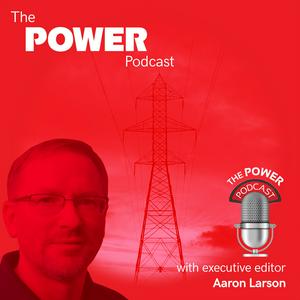
Ontvang de gratis radio.net app
- Zenders en podcasts om te bookmarken
- Streamen via Wi-Fi of Bluetooth
- Ondersteunt Carplay & Android Auto
- Veel andere app-functies
Ontvang de gratis radio.net app
- Zenders en podcasts om te bookmarken
- Streamen via Wi-Fi of Bluetooth
- Ondersteunt Carplay & Android Auto
- Veel andere app-functies


The POWER Podcast
Scan de code,
download de app,
luisteren.
download de app,
luisteren.
